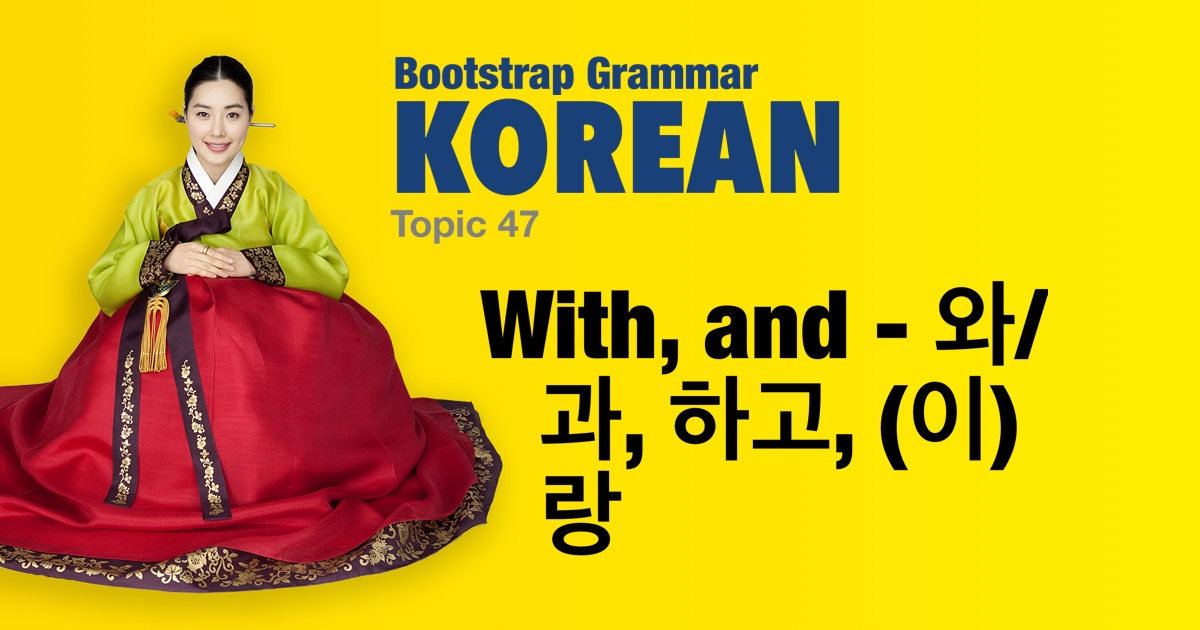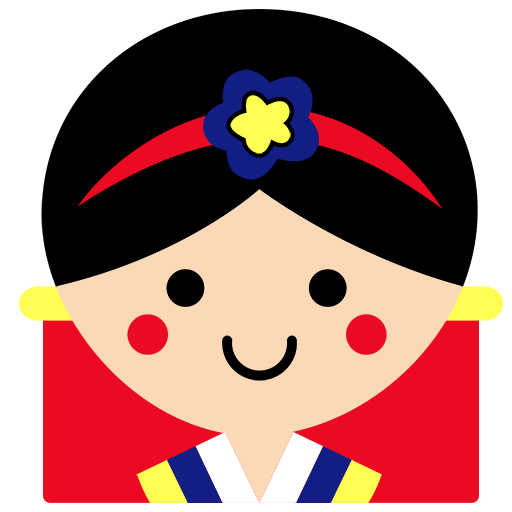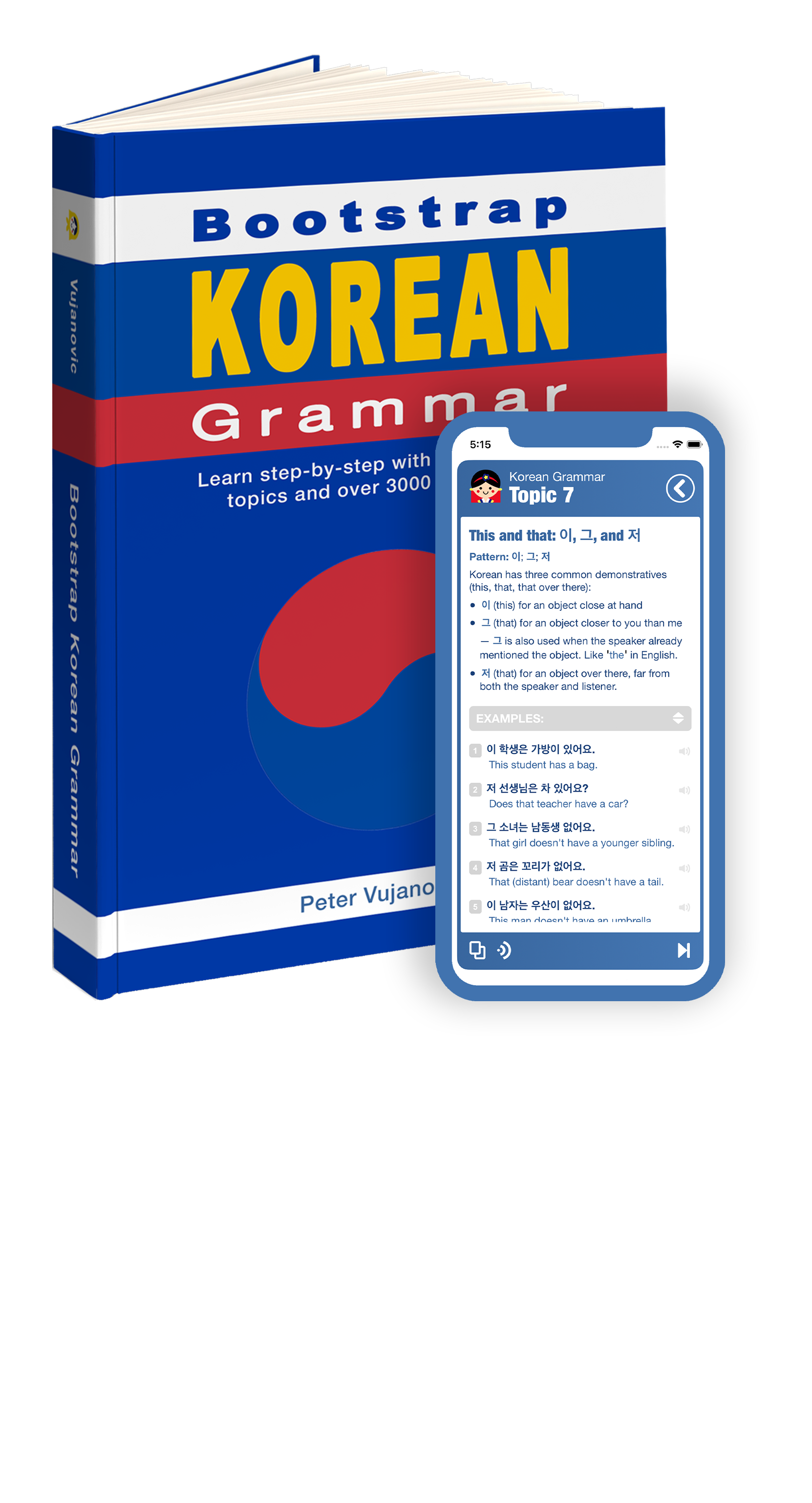Korean grammar - With, and - 와/과, 하고, (이)랑 |
|||
|
|||
There are lots of ways to say 'with' or 'and' in Korean. And indeed there is less distinction between 'with' and 'and' in Korean than in English, so these Korean words can mean both. • 하고 is colloquial and very common. • 랑 (이랑 after consonant) is more casual. • 와 (과 after a vowel) is slightly bookish and bit awkward to use in spoken Korean -- 와/과 같이 or 와/과 함께 are also often used probably for emphasis and to help the monosyllabic 와 from getting lost and inaudible. |
| Examples: | |
|
친구들하고 공원에서 놀았어요.
(I) played with (my) friends in the park. |
|
|
교수님과 이야기 못 했어요.
(I) could not talk with the professor. |
|
|
누나랑 쇼핑 갔어요.
(I) went shopping with (my) older sister. |
|
|
어젯밤에 남동생하고 공부했어요.
Last night (I) studied with (my) younger brother. |
|
|
아내와 결혼식장에서 춤췄어요.
(I) danced with (my) wife at the wedding. |
|
|
부모님과 저녁 먹어요.
(I) eat dinner with (my) parents. |
|
|
지수와 피시방에 갔어요.
(I) went to a PC (game) room with Jisoo. |
|
|
다음 주 토요일에 저는 가족이랑 놀이공원에 갈 거예요.
Next Saturday I'm going to an amusement park with (my) family. |
|
|
강아지랑 산책해 보고 싶어요.
(I) want to try to go for a walk with my dog. |
|
|
엄마랑 영화관에 갈 거예요.
(I) will go to the cinema with (my) mom. |
|
|
책과 연필이 있어요.
(I) have a book and a pencil. |
|
|
친구들하고 이야기 했어요
(I) talked with (my) friends. |
|
|
누구랑 수영장에 갔어요?
With whom did (you) go to the swimming pool? |
|
|
우리는 라면하고 떡볶이 먹고 싶어요.
We want to eat ramen and tteokbokki. |
|
|
좋은 소식과 나쁜 소식이 있어요.
(I) have good news and bad news. |
|
|
저는 여자 친구랑 점심을 먹었어요.
I had lunch with (my) girlfriend. |
|
|
저는 할머님과 같이 여행 갔어요.
I travelled with (my) grandma. |
|
|
엄마와 형과 누나와 동생과 함께 점심을 먹었어요.
(I) have lunch with (my) mother, (male's) older sister, and younger brother. |
|
 |
|


